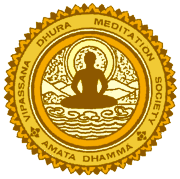Real Buddhism?
Real Buddhism is not about going to temples, seeing statues of the Buddha, giving alms, or attending ceremonies. While these are all worthwhile, they do not answer the question, "What is real Buddhism?"
If we say that real Buddhism is the practice of meditation using mindfulness and clear comprehension to realize wisdom, and thus erase all defilements (mental impurities) from the mind and end suffering, we are getting closer. But we are still not quite there.
If we say that real Buddhism consists of matter (rupa) and mind (nama), then we are getting closer still; but even this is not entirely satisfactory. The word "nama" might still convey the notion of a mind that is compact, all of a piece, performing many different mental functions.
In order to give a truer picture of the mind, nama must be expressed as a sequence of mental states (cittas, or moments of consciousness), each arising separately, and each different from the other. The mental state that sees is not the same as the mental state that hears; the mental state of a wandering mind is different from the mental state that observes the body (rupa) in meditation practice, and so forth. "We" — that is, our entire existence at any given time — is simply the arising of one of these mental states, which is quickly replaced by another.
But mental state or consciousness (citta) is still not enough. Mental states are actually accompanied by 52 different mental properties, called cetasikas (however, not all 52 appear at the same time). For example, feeling, perception, anger, and mindfulness are some of these mental properties or cetasikas.
So now our definition of "mind" becomes: citta-cetasika, consciousness and mental properties. We may now add rupa (matter) to our definition of Buddhist reality, and we get: citta-cetasika and rupa.
But citta-cetasika-rupa (consciousness-mental properties-matter) is still not the whole picture. If we practice successfully — which means realizing clearly that rupa and nama are not "us" — we will reach a state in which a brief path-moment arises that erases all defilements. This path-moment has nibbana as an object, and this nibbana is also a part of Buddhist reality. On experiencing nibbana, one is said to have reached "enlightenment."
Thus, our final definition of Buddhist reality now becomes: mind-body and enlightenment — or, to state it in Pali, the language of Buddhism: citta-cetasika-rupa, and nibbana. These four things, in Buddhism, comprise ultimate reality. They are the things in the universe that are real; that is, they do not require concepts in order to be understood [because they are experienced directly, immediately, without going through any process of reasoning or thinking. They are not conceptual, but exist whether or not we think about them].
Every living thing in the universe is made up of the first three of these — citta-cetasika and rupa. Nibbana — which is the object experienced during the path-moment that erases defilements from the mind — is the fourth ultimate reality. It is important to know that nibbana is just an object of the mind at a certain stage of wisdom. It actually appears as a very brief moment of peace and stillness — and its nature is that of having no defilements.
The purpose, in Buddhism, of observing the first three realities (citta-cetasika-rupa) is to demonstrate that "you" are really made up of many parts — rapidly-changing mental states and rapidly-changing bits of matter — and since none of these parts is "you," the parts together are not "you," either. The science in Buddhism that analyzes the body and mind into smaller and smaller parts is called "Abhidhamma": this science helps us to better see that "we" are not a man, not a woman, not a self.
So this ultimate reality (citta-cetasika-rupa, and nibbana) is Buddhism — real Buddhism. Every living thing in the world answers to this mind-matter definition (citta-cetasika-rupa). Non-living things are just matter, rupa. Even though people do not know this definition and may never even have heard of Buddhism, they are still made up of citta-cetasika-rupa; and nibbana still exists as a state that the mind can reach when it has absolute purity.
Copyright © Boonkańjanaram Meditation Center

